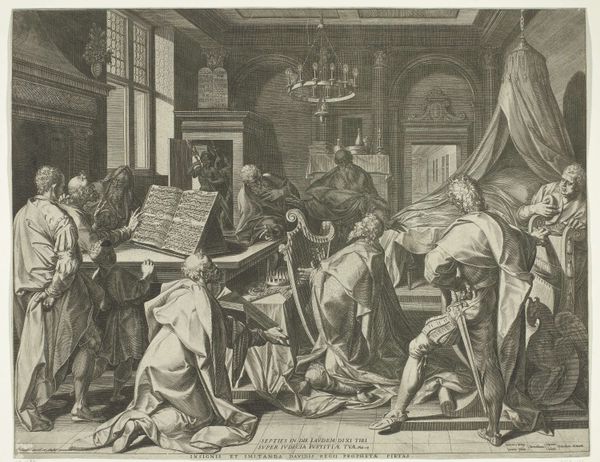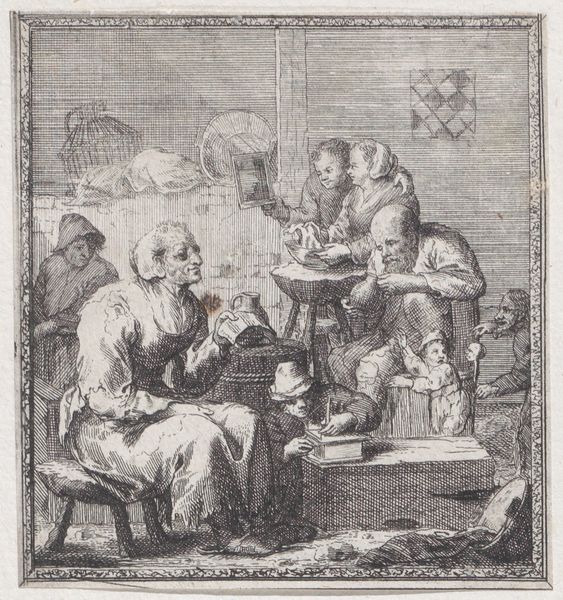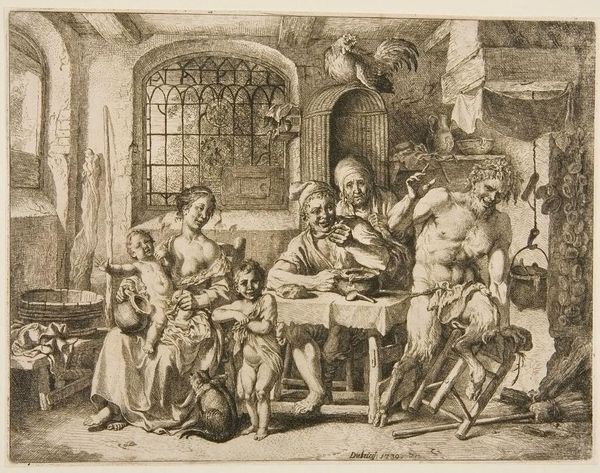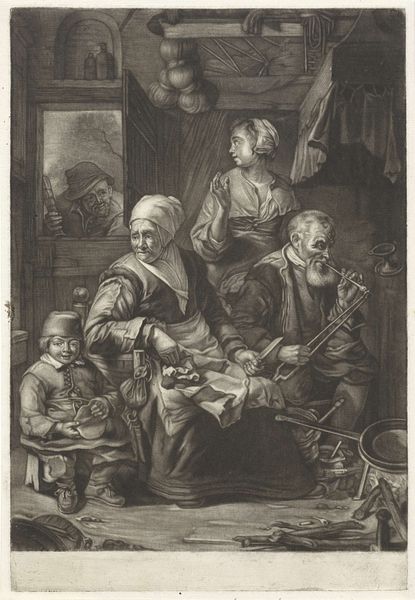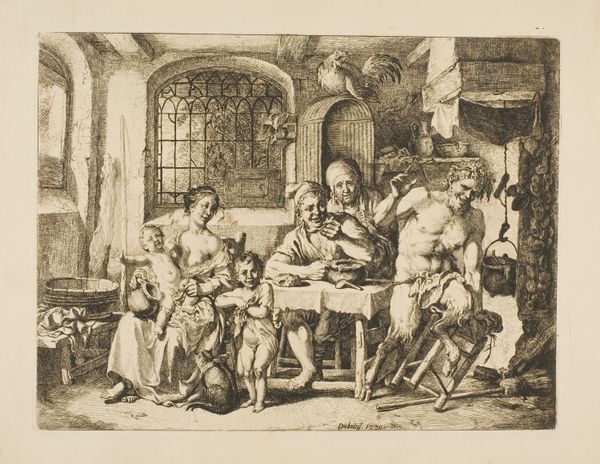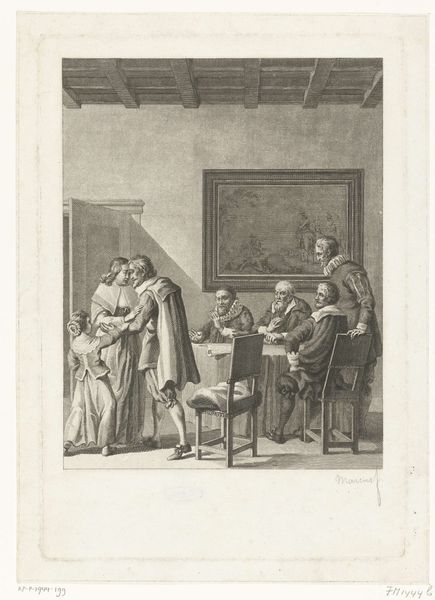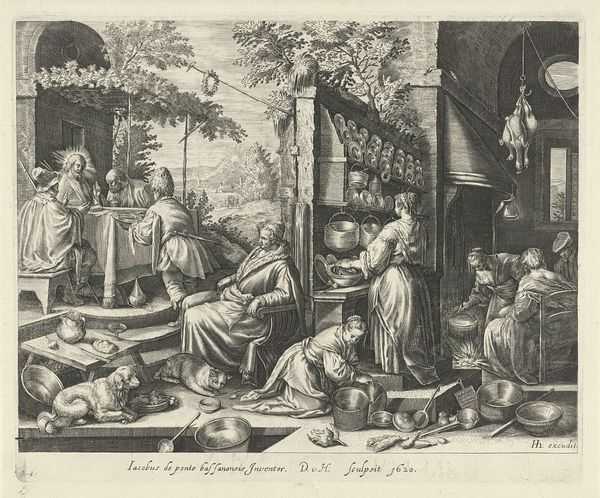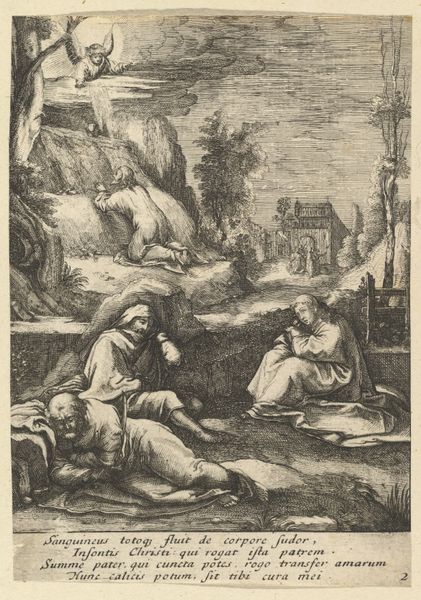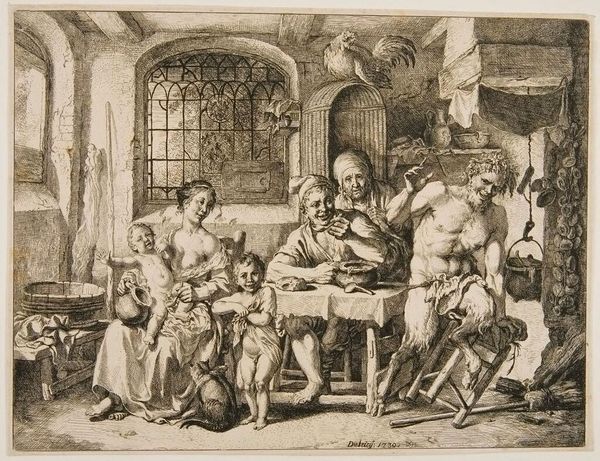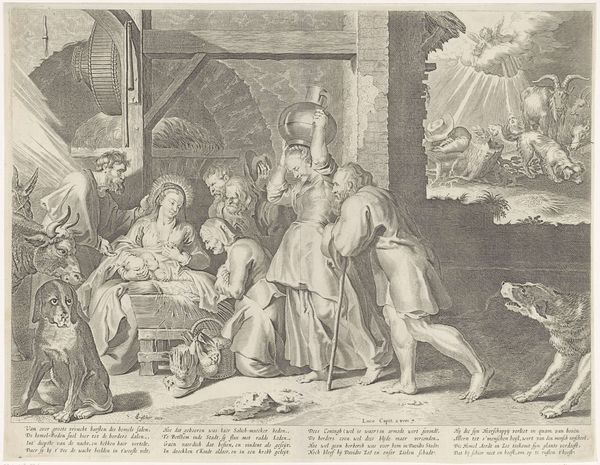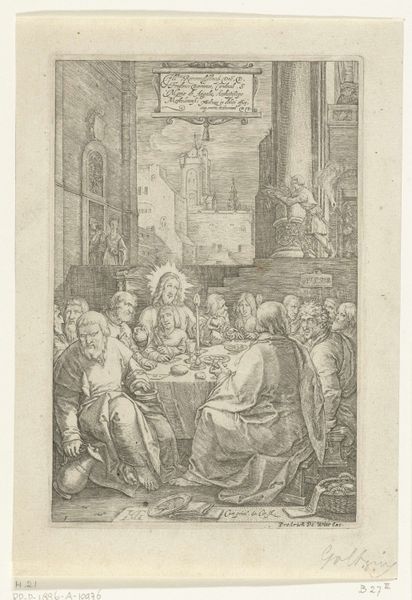
print, engraving
#
baroque
# print
#
figuration
#
line
#
genre-painting
#
history-painting
#
engraving
Dimensions: height 193 mm, width 273 mm
Copyright: Rijks Museum: Open Domain
Curator: This print, "Christ in the House of Martha and Mary," likely created between 1586 and 1650, presents an interesting glimpse into Baroque aesthetics. Editor: My initial reaction is one of controlled chaos! Look at the stark division between Christ's serenity on the left and Martha's frenzy in the kitchen on the right; the composition guides us directly into the center, with the contrast really making this engraving come alive. Curator: Exactly. I find myself focusing on the incredible detail achieved through the engraving process, those distinct, yet delicate, lines. The artist masterfully uses the medium to distinguish textures, from the smooth platters lining the kitchen wall, the plucked fowl hanging on the rack, to the scaly fish brought in. The level of workmanship speaks to a specialized labor practice, intended for dissemination and consumption within a specific market. Editor: Right, and considering the broader context, you have to recognize how this piece plays into societal expectations and gender roles during this time. Martha, burdened by domestic labor, contrasts sharply with Mary, who is traditionally seen prioritizing spiritual contemplation with Jesus. The division between private/female and public/male domains. The print underscores existing tensions while propagating specific religious ideologies about female devotion. Curator: Indeed, but I think looking at the consumption of images such as this opens interesting avenues, too. Prints such as these would’ve had varied functions: education, art appreciation by those unable to afford painting, devotional. Understanding that a large, unseen workforce existed creating and selling this art speaks volumes about access. Editor: I agree, the layered accessibility to imagery like this print is also vital. I'm struck by how an ostensibly simple biblical scene carries within it dialogues on religion, labour and identity. It is simultaneously devotional, artistic, and a reflection of social frameworks of the period. Curator: Considering the skilled workmanship and purpose, I think it's fair to say that, though humble in material, it has an immense density. Editor: Absolutely, it reminds us how seemingly simple images often harbor intricate stories and biases about the world they represent.
Comments
No comments
Be the first to comment and join the conversation on the ultimate creative platform.
